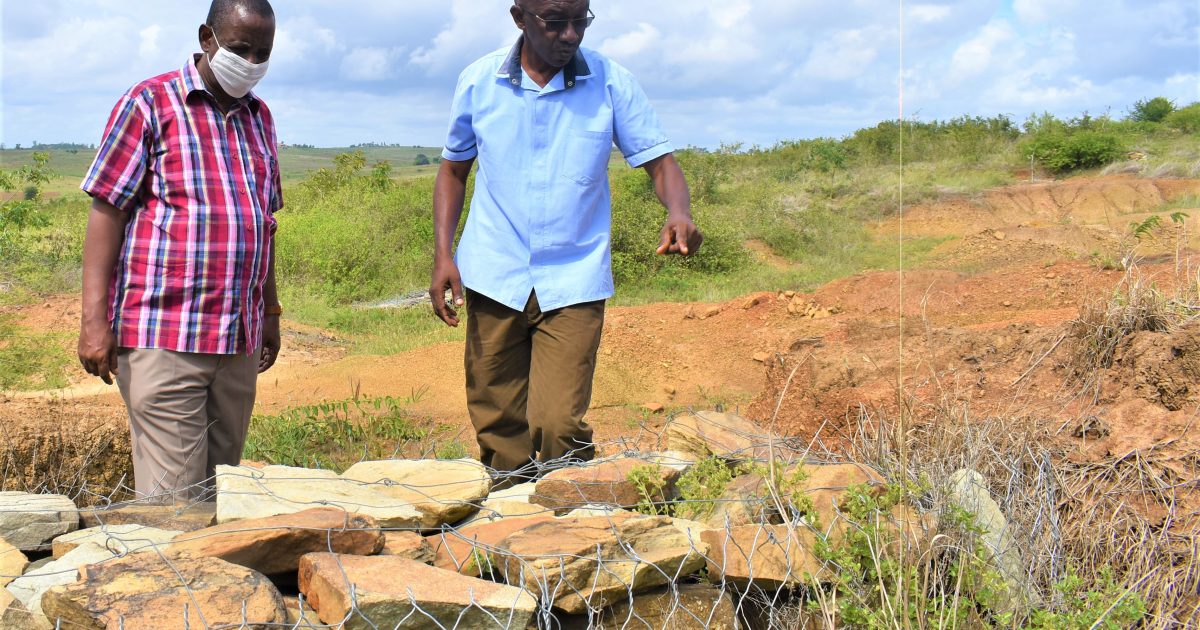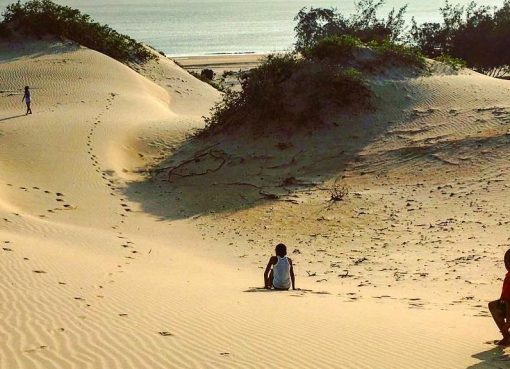Rehabilitation works spearheaded by the Coast Development Authority (CDA) on the Mwache Multipurpose Dam project in Kwale County is gathering pace.
Construction work on the much-awaited mega water project co-funded by the World Bank and the Kenya Government to the tune of Sh20 billion is expected to begin in March 2021.
The construction of the Mwache Dam project is meant to harness the floodwaters from Mwache River basin in Kinango Sub County and help tackle persistent water shortages in the coastal region.
Mwache Dam is an 87.5 meter-tall concrete gravity dyke, impounding 118 million cubic meters for water supply and irrigation and is expected to boost the water supply for Kwale and Mombasa counties.
The massive dam, when complete, is expected to put 2,600 hectares of land under irrigation in Kwale County.
CDA Managing Director (MD) Dr Mohamed Keinan says rehabilitation works on the dam site began in earnest in 2017 under the aegis of the Coast Water Security and climate change resilience project.
Dr. Keinan on Tuesday said the much talked about mega-dam was first conceptualized by CDA in 1995 but plans to begin construction were hampered by lack of funding.
“We are currently increasing the forest cover for the entire Mwache catchment area that stretches from Taita Taveta County to Kwale,” he said while on a monitoring and evaluation visit to the project site.
Dr Keinan said other ongoing activities include tree planting, terracing, contour ploughing, rock terracing, gabion construction and riparian marking and pegging to allow for the regeneration of natural vegetation.
He said population growth and growing demand for precious water resources has accelerated the construction of the mega dam.

“But now plans to begin construction were given fresh impetus when the government secured the required funding,” said Dr Keinan.
The CDA MD said the government is banking on the Mwache dam reservoir as one that will offer a lasting solution to the water shortfall facing residents of Kwale and Mombasa.
The Mwache catchment management is being implemented by the CDA Project Implementation Unit (CDA PIU) in partnership with the Water Resources Authority (WRA), Water Resource Users Associations (WRUAs), Kwale County Government, the Kenya Forestry Service (KFS), the Kenya Forest Research Institute (KeFRI) and the local community.
“CDA is the executing agency of rehabilitation works while the Ministry of Water, through the Project Management Unit (PMU), is the overall implementing agency,” he said adding that once complete the dam will help counter a future water crisis.
Dr. Keinan said Mwache when in full operability will ensure continued contribution to food security and economic growth, prosperity and poverty alleviation in the region.
He said CDA is helping train smallholder farmers and water users associations around the project site with modern farming techniques.
CDA project site manager William Fondo said the gabions built in gullies are a soil and water conservation practice used to cope with soil loss and reservoir situation.
He said the consequent slowing-down of the flowing water limits flood-waves, reduces soil loss upstream and promotes water infiltration into the soil.
“The gabion check dams reduce soil erosion and preserve reservoir storage capacity” said Fondo.
Eunice Bosibori of the Water Resources Management Authority said the enhanced rehabilitation works around the project site was to improve access to safe and clean water for domestic and irrigation use.
Bosibori says the building of gabions and markings and pegging around the banks of the dam will ensure local farmers do not to cultivate on riparian land.
She said farming activities on the banks of rivers and the dam will make the soil loose and susceptible to soil erosion.
“Accumulation of silt reduces dam water holding capacity hence the need to put mechanisms against siltation” she said.
She said the crucial water project will in the long run help Kwale and Mombasa counties achieve climate-smart farming.
Several residents around the project site welcomed the dam rehabilitation and improvement activities.
They said the training on modern farming techniques have improved their yields thus fetching good income.
Esther Keya, a local farmer, said they have been able to get better yields since they embraced agricultural terracing and use of organic farming.
By Hussein Abdullahi





